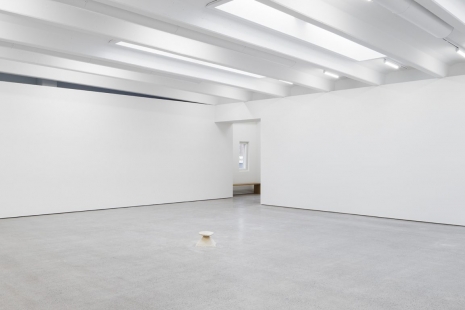In Romania Bernea is canonised as a key artist of the postwar period, but to audiences abroad he has remained less known than contemporaries such as Geta Brătescu, Andrei Cadere, Ion Grigorescu (whom Kohta featured in 2019) or Paul Neagu. Nevertheless, he was internationally active from the late 1960s onwards, exhibiting in France, Italy, Scotland, England and other European countries.
Having emerged as a painter in the mid-1960s, Bernea developed an intellectual yet personal and poetic approach to his medium in extensive thematic series such as the ‘Production Charts’ of the late 1960s, the ‘Entities’ and ‘Hills’ of the 1970s, the ‘Banners’ of the 1970s and ’80s and the ‘Columns’, ‘Gardens’ or ‘Old Romanian Towns’ of the 1990s.
Although his works on paper are significant, and also his writings and his many notebooks, oil on canvas remained a prime means of articulation throughout his career, and while he eschewed technical virtuosity he was one of the most accomplished and versatile European painters of his generation.
In 1990, in the immediate aftermath of the December 1989 revolution, Bernea was appointed Director of what was to become the Museum of the Romanian Peasant in Bucharest, inaugurated in 1993 as a total installation grounded in his artistic vision and incorporating an vast collection of ethnographic objects. Widely acclaimed by both general and specialist audiences, it received the European Museum of the Year award in 1996.
The exhibition at Kohta will include some 30 paintings from key series, notably ‘Production Charts’, ‘Entities’, ‘Banners’ and Columns’, as well as sketches for and photographic documentation of the displays in the Museum of the Romanian Peasant (by the renowned artist and photographer Iosif Király). The selection, made in collaboration with Ivan Gallery and with consultation from the respected art historian Dr. Anca Oroveanu, is intended as a ‘teaser’, a purposely incomplete introduction to Bernea’s oeuvre for Finnish audiences that will, most probably, not be aware of how interesting and important he was – and still is – as an artist.
More than twenty years after his untimely death, Bernea’s work is continuing to capture significant trends in today’s society, not just in his own country but around the world. There is increasingly widespread unease with the still very powerful idea about universal development based on endless economic growth.
Bernea was, during his lifetime, associated with both modernism (in its later manifestations that, already in the relatively liberal Romanian 1960s, veered towards post-modern irony) and with anti- or counter-modernism (as a member of the artist group Prolog, founded in 1980 and associated with the ‘neo-orthodox’ strand of contemporary Romanian art).
When people today question modernity, modernisation and modernism it is not only to do with the climate crisis but also with the political fallout of the ideology of unstoppable modernising. There is much talk about decolonisation and the decolonial, also in the context – too well known in both Finland and Romania – of Russian imperialism and the ongoing war in Ukraine.
When political thinkers and activists also speak of ‘demodernisation’ and ‘the demodern’, they don’t mean that we should negate or try to undo everything that has been achieved since the beginning of industrialisation 250 years ago. What they mean is that we must find new ways forward that do not rely on the idea of continued growth and universal development.
This is where we bring Bernea into the picture. Long before these ideas were formulated conceptually, he embodied the need for demodernisation, a process that takes into account both the rational and the spiritual, the traditional and the new and unknown. Therefore we have titled our exhibition ‘Horia Bernea: Painter of the Demodern’ – with a wink to Charles Baudelaire’s famous essay about the illustrator Constantin Guys, Le peintre de la vie moderne (The Painter of Modern Life), which was published exactly 160 years ago.
The project is supported by the Romanian Cultural Institute in Stockholm.





